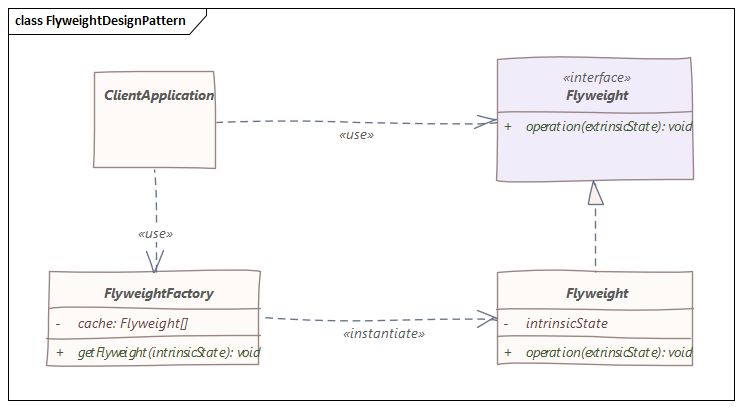I am here to discuss another structural design pattern named Flyweight Design Pattern.
Flyweight Design Pattern
- The Flyweight Design Pattern is a Structural Design Pattern and one of the Gang of Four design patterns.
- The Flyweight pattern is used to minimize the memory usage by sharing as much data as possible with other similar objects.
- The Flyweight pattern provides a way to reduce the number of objects created and to decrease memory footprint and increase performance.
- The Flyweight pattern tries to reuse already existing similar kind objects by storing them in a collection which act like a cache and creates new object when no matching object is found.
- The Flyweight objects we create as immutable. This means that they cannot be modified once they have been constructed. Making flyweight objects as immutable helps while sharing them with other objects.
- The data structures for graphical representation of characters in a Word Processor is a very good classical example of Flyweight pattern.
- The String Interning is another very good example of Flyweight pattern.
- The Flyweight pattern helps us avoiding having large number of objects and allow us to effectively used the created objects by reusing them as much as possible.
- The Flyweight object essentially has two different kind of attributes –
- Intrinsic - An intrinsic (invariant) state attribute is stored and shared in the flyweight object. It is independent of flyweight’s context. So, as the best practice we should make intrinsic states immutable.
- Extrinsic - An extrinsic (variant) state attribute does not store and share in the flyweight object because it depends on flyweight’s context and varies as context change. Generally, we store and maintain the extrinsic state in the Client objects. We need to pass this extrinsic state to the flyweight object for object creation and processing.


